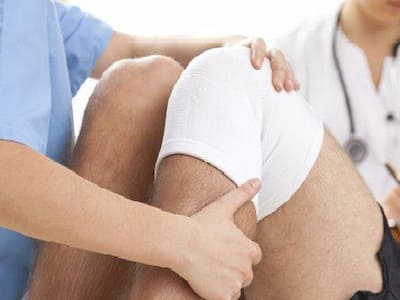
Physical therapy plays a vital role in the successful recovery of patients following knee replacement surgery.
Knee replacement surgery can be a life-changing experience for individuals suffering from chronic knee pain and limited mobility. However, the success of the surgery depends not only on the surgical procedure itself but also on the post-operative rehabilitation process. Physical therapy plays a crucial role in knee replacement recovery, helping patients regain strength, flexibility, and mobility. Let’s explore the significance of physical therapy in the rehabilitation journey following knee replacement surgery.
Early Intervention
Following knee replacement surgery, physical therapy typically begins as soon as possible. Even on the day of the surgery, patients are encouraged to start moving the joint with the assistance of a physical therapist. Early intervention helps prevent complications such as blood clots and stiffness, while also kickstarting the healing process. Physical therapists employ a range of techniques and exercises tailored to each patient’s specific needs, ensuring a safe and progressive recovery.
Restoring Range of Motion
One of the primary goals of physical therapy after knee replacement surgery is to restore the joint’s range of motion. The knee joint tends to stiffen due to surgery and immobility, which can hinder everyday activities. Physical therapists use a variety of techniques such as passive and active range-of-motion exercises, manual therapy, and gentle stretching to improve flexibility and restore normal joint function. Gradually, patients regain the ability to perform activities like walking, bending, and climbing stairs without pain or difficulty.
Building Strength and Stability
Knee replacement surgery often weakens the surrounding muscles due to disuse and trauma. Physical therapy focuses on rebuilding strength and stability in these muscles to provide support to the new joint. Therapists employ targeted exercises that strengthen the quadriceps, hamstrings, and hip muscles, among others. Strengthening these muscle groups not only improves overall joint stability but also reduces the risk of future injuries and enhances functional abilities.
Enhancing Balance and Coordination
Patients who undergo knee replacement surgery may experience balance and coordination issues initially. These difficulties can arise due to pain, muscle weakness, and altered walking patterns. Physical therapists employ specialized exercises and techniques to improve balance and coordination, which are crucial for preventing falls and ensuring a safe recovery. Through targeted training, patients gradually regain their sense of balance and are better equipped to perform daily activities with confidence.
Pain Management
Pain is a common concern during knee replacement recovery. Physical therapists play a vital role in managing pain through various techniques, including manual therapy, heat or cold therapy, and electrical stimulation. They also educate patients on proper posture and body mechanics to minimize stress on the knee joint, thereby reducing discomfort. By addressing pain effectively, physical therapy enables patients to engage in rehabilitation exercises more comfortably, accelerating the recovery process.
READ RELATED: Logan Paul's Energy Drink Prompts Concerns and Call for FDA Investigation
Increasing Awareness of the Patient
Apart from providing hands-on treatment, physical therapists educate patients about their condition and equip them with self-management techniques. Patients learn about proper body mechanics, how to use assistive devices such as crutches or walkers, and techniques to prevent future knee problems. By empowering patients with knowledge and self-care strategies, physical therapists enable them to take an active role in their recovery journey, leading to better long-term outcomes.
Physical therapy plays a vital role in the successful recovery of patients following knee replacement surgery. By focusing on range of motion, strength, balance, pain management, and patient education, physical therapists provide comprehensive care to individuals seeking to regain their mobility and independence. If you or someone you know is considering knee replacement surgery, remember that physical therapy is an essential component of the rehabilitation process, facilitating a faster and more complete recovery.
(This article is authored by Dr Vivek Mahajan, Senior Consultant, Orthopedic and Joint Replacement Surgeon, Indian Spinal Injuries Centre)
Total Wellness is now just a click away.
Follow us on
Don’t Miss Out on the Latest Updates.
Subscribe to Our Newsletter Today!
window.addEventListener(‘load’, (event) => {
$(‘#commentbtn’).on(“click”,function(){
(function(d, s, id) { var js, fjs = d.getElementsByTagName(s)[0]; if (d.getElementById(id)) return; js = d.createElement(s); js.id = id; js.src = “//connect.facebook.net/en_US/sdk.js#xfbml=1&version=v2.3”; fjs.parentNode.insertBefore(js, fjs);}(document, ‘script’, ‘facebook-jssdk’));
$(“.cmntbox”).toggle();
});
});









